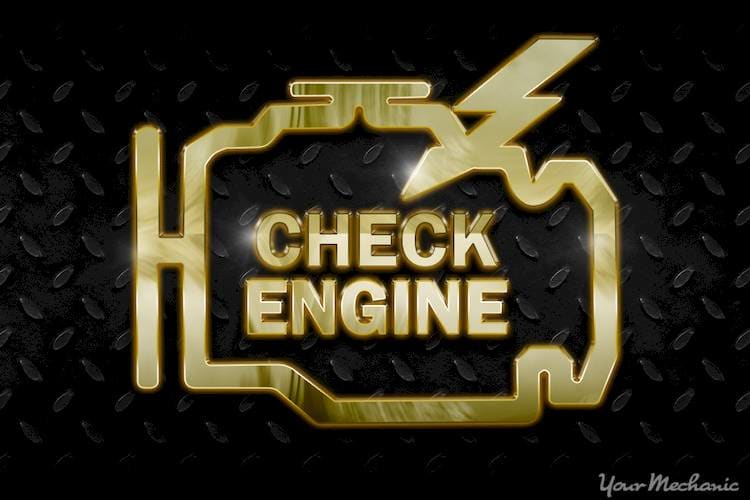What the P3413 code means
The P3413 is a generic OBD-II powertrain code, which means it applies to all makes and models of vehicles from 1996 to the present.
What causes the P3413 code?
There may be one or more causes for the P3413 code. One is a short to your power. You may also have poor connections or disconnected wires, a faulty engine control module.
What are the symptoms of the P3413 code?
Your Check Engine Light may come on to indicate that your car is having issues with its exhaust valve. Your vehicle may also suffer from decreased fuel economy and poor acceleration.
How does a mechanic diagnose the P3413 code?
Check for unplugged harness connections and search for corrosion or loose wires on your connectors. Unplug harness connectors from Solenoid and PCM, and using a wiring diagram try to locate the + and - wires to the solenoid. Depending on the application, the solenoid can be either ground side or power side controlled. Make sure that you check with factory wiring diagrams to determine the power flow in your circuit. Next, using a digital volt ohm meter set to the ohms setting, look for resistance between each end of your wires. If your meter reads that there is an over limit, there may be a loose connection or terminal. Using your meter, check for resistance between your electrical terminals. Please note that a very low resistance reading on your meter most likely indicates that your solenoid is faulty.
With the electrical harness to the solenoid unplugged, using the DVOM set to ohms, check for resistance between each of the electrical terminals on the control solenoid itself. Use the factory specifications or a known good control solenoid if available to determine if there is resistance in the solenoid. If there is an over limit or very low resistance reading on the DVOM, the solenoid is likely faulty. Short to power - Unplug the harness to the PCM/ECM and locate the wires to the control solenoid.
Always begin by inspecting the wiring and connectors. To do this, use an OBD-II scanner and a digital volt/ohmmeter. After inspection, replace or repair any shorted, damaged, disconnected, or corroded wiring, and connectors. Remember to record all codes and freeze frame data. Afterward, clear the code and then test-drive the car to see if the code reappears. If the code does not reappear immediately, you may have an intermittent condition, which are harder to diagnose. Unlike most diagnostic codes, an intermittent condition code is often better left to a professional due to the amount of circuitry involved. Also, an experienced professional may have a specialized scanner, such as a Tech II or an Autohex, which will help them determine the area of the malfunction more easily and efficiently.
How serious is the P3413 code?
The P3413 code is serious and, unless you are very skilled and have the proper tools, should be looked at by a professional technician.
What repairs can fix the P3413 code?
With the meter set to the volts scale, connect the negative lead to ground and the positive lead to the wire or wires to the control solenoid. If voltage is present, you may have a short in the wiring harness. Next, locate the short to power by unplugging your harness connectors and testing the wiring back to the solenoid. If your wiring and the control solenoid is okay, you will need to monitor the solenoid during engine operation by probing the wires at the ECM/PCM.
With an advanced scan tool that is able to read the engine functions, you will need to monitor the duty cycle commanded to the control solenoid. Please note that you will need to monitor the solenoid during engine operation. Using an oscilloscope or graphing multimeter set on the duty cycle scale, connect the negative lead to ground that you trust, and then connect the positive lead to the wire terminal at the solenoid itself. The reading on the multimeter tool should match the commanded duty cycle on your scan tool.
If these are opposite, the polarity may be reversed. If this is the case, connect the positive lead on the other wire terminal to the solenoid and test again to verify that this is the case. If the signal detected from the PCM is on all the time, there may be a problem with the PCM.
Many older vehicles have temporary sensor problems that occur due to prolonged stress on the drivetrain. A P3413 can be difficult to diagnose and repair, but it is not as difficult to fix as some other codes. If you do decide to do this yourself, make sure that you read up on the ways to repair this issue and obtain the proper diagnostic equipment.
Need help with a P3413 code?
YourMechanic offers certified mobile mechanics who will come to your home or office to diagnose and repair your vehicle. Get a quote and book an appointment online at (https://www.yourmechanic.com) or speak to a service advisor at 1-800-701-6230.
Check Engine Light
trouble codes
P3413





